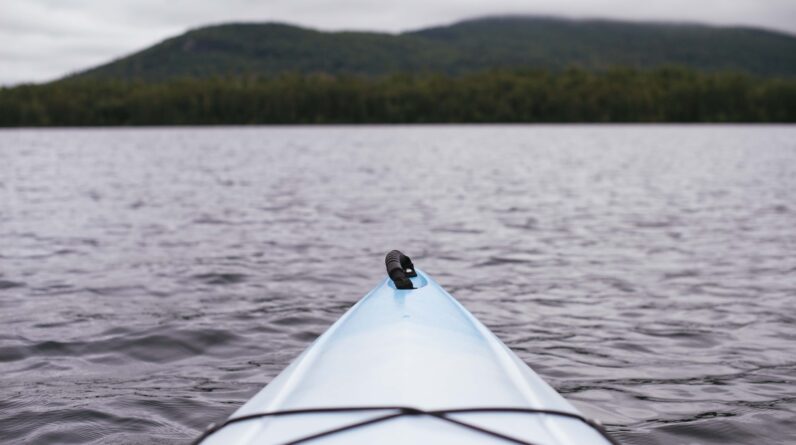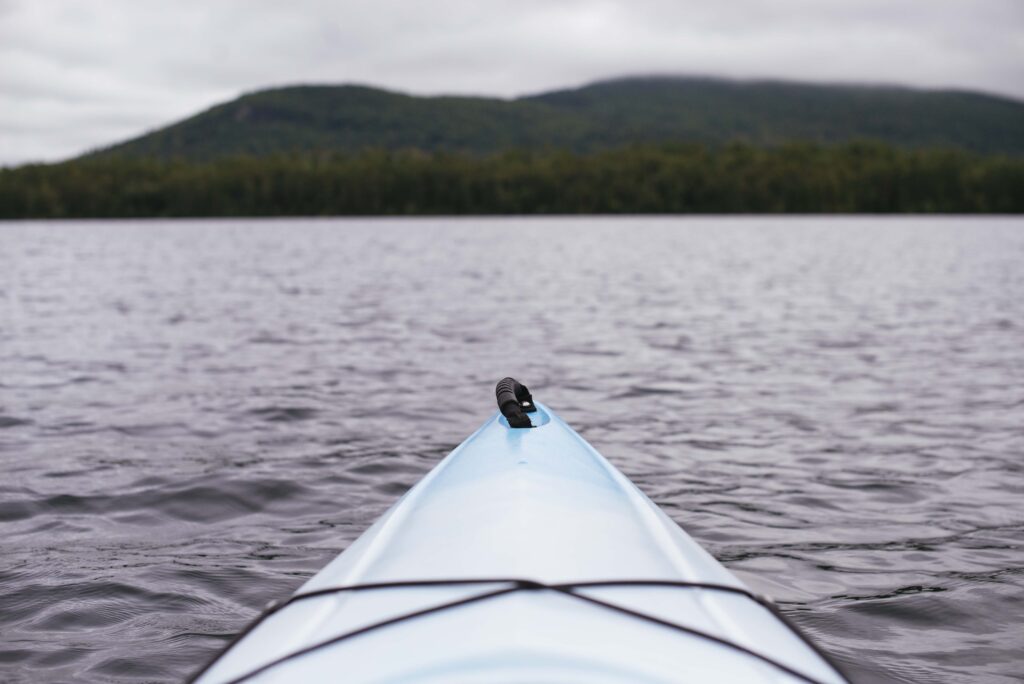
Are you an avid fishing enthusiast looking for the perfect kayak? Look no further! “The Ultimate Guide to Choosing the Best Inflatable Kayaks for Fishing” is here to make your search a breeze. Packed with expert advice and thorough research, this comprehensive guide will help you navigate through the wide variety of inflatable kayaks available in the market. From durability and stability to portability and affordability, this guide covers it all, ensuring that you find the perfect kayak to enhance your fishing experience. Say goodbye to endless hours of scrolling through countless options and let “The Ultimate Guide to Choosing the Best Inflatable Kayaks for Fishing” be your ultimate companion in making the right choice.
The Ultimate Guide to Choosing the Best Inflatable Kayaks for Fishing
When it comes to enjoying a day out on the water while fishing, inflatable kayaks are a popular choice. They offer convenience, portability, and affordability, making them a great option for anglers of all skill levels. However, with so many options available on the market, it can be overwhelming to choose the right inflatable kayak for your fishing needs. This comprehensive guide will walk you through the different types of inflatable kayaks, considerations for choosing one, materials used, size and dimensions, fishing features, inflation and deflation systems, kayak design and construction, price range, brand and customer reviews, and safety considerations.
1. Types of Inflatable Kayaks for Fishing
1.1 Sit-on-Top Inflatable Kayaks
Sit-on-top inflatable kayaks are a popular choice among anglers due to their open design, which allows for easy entry and exit from the kayak. These kayaks are stable, making them perfect for fishing in calm waters. They also offer ample space for gear and accessories, making it easy to bring all your fishing essentials along.
1.2 Sit-Inside Inflatable Kayaks
Sit-inside inflatable kayaks provide a more traditional kayaking experience. They have a cockpit that you sit inside, which offers a higher level of protection from water splashes and waves. These kayaks are versatile and can handle a variety of water conditions. They are also known for their maneuverability, making them ideal for navigating narrow waterways.
1.3 Hybrid Inflatable Kayaks
Hybrid inflatable kayaks combine the best features of sit-on-top and sit-inside kayaks. They offer the stability and spaciousness of sit-on-top kayaks, while providing the protection and maneuverability of sit-inside kayaks. Hybrid kayaks are a great option for anglers who want the best of both worlds.
2. Considerations for Choosing an Inflatable Kayak for Fishing
When choosing an inflatable kayak for fishing, there are several important factors to consider. These include weight capacity, stability, portability, durability, maneuverability, and storage options.
2.1 Weight Capacity
It’s crucial to choose an inflatable kayak with a weight capacity that suits your needs. Consider your body weight, gear weight, and any additional accessories you plan to bring along. It’s always best to choose a kayak with a higher weight capacity than what you actually need, as this ensures stability and prevents any risks of overloading.
2.2 Stability
Stability is a key factor when it comes to fishing from an inflatable kayak. Look for kayaks that have a wide and flat hull design, as these provide excellent stability. Another factor to consider is whether the kayak has a high initial stability or secondary stability. High initial stability means the kayak is stable when you first get in, while secondary stability refers to how stable the kayak remains as you lean or shift your weight.
2.3 Portability
One of the main advantages of inflatable kayaks is their portability. Consider the weight and size of the kayak when deflated, as well as the ease of packing it up and transporting it. Look for kayaks that come with a carrying bag or backpack for convenient storage and transportation.
2.4 Durability
Durability is essential when it comes to inflatable kayaks for fishing. Look for kayaks made from high-quality materials that are puncture-resistant and UV-resistant. Reinforced seams and multiple air chambers are also indicators of a durable kayak that can withstand the rigors of fishing.
2.5 Maneuverability
Maneuverability is important when you’re navigating through various water conditions and tight spaces. Consider the kayak’s length, width, and hull design to determine how easily it can turn and handle different water currents. Additionally, kayaks with skegs or rudders provide better tracking and directional control.
2.6 Storage Options
Having ample storage options in your inflatable kayak is crucial for fishing. Look for kayaks that come with bungee cords, storage compartments, or areas to attach gear and accessories. Having easy access to your fishing tackle, snacks, and other essentials will make your fishing experience more enjoyable.

3. Materials Used in Inflatable Kayaks for Fishing
The materials used in inflatable kayaks play a significant role in their durability and performance. There are three main types of materials used: PVC, Hypalon, and Nitrylon.
3.1 PVC
PVC (Polyvinyl Chloride) is the most common material used in inflatable kayaks. It is affordable, lightweight, and easy to repair. PVC kayaks are resistant to UV rays and abrasion, making them suitable for extended outdoor use. However, they may not be as puncture-resistant as kayaks made from other materials.
3.2 Hypalon
Hypalon is a synthetic rubber material known for its high resistance to chemicals, UV rays, and extreme temperatures. It is commonly used in more high-end inflatable kayaks. Hypalon kayaks are incredibly durable and puncture-resistant, making them ideal for rugged fishing conditions. However, they tend to be more expensive compared to PVC kayaks.
3.3 Nitrylon
Nitrylon is a newer material used in inflatable kayaks that offers the benefits of both PVC and Hypalon. It is a combination of synthetic rubber and nitrile, making it resistant to punctures, UV rays, and chemicals. Nitrylon kayaks are eco-friendly, lightweight, and have excellent abrasion resistance. They may have a slightly higher price point than PVC kayaks but are more affordable than Hypalon kayaks.
4. Size and Dimensions of Inflatable Kayaks for Fishing
The size and dimensions of an inflatable kayak play a crucial role in its performance and comfort. Consider the following factors when deciding on the size of your fishing kayak:
4.1 Length
The length of a kayak affects its speed, tracking, and maneuverability. Longer kayaks are generally faster and track better in a straight line, but they may be more challenging to turn. Shorter kayaks offer better maneuverability but may sacrifice speed. Consider the type of water you’ll be fishing in and your fishing style when deciding on the length.
4.2 Width
The width of a kayak affects its stability and load capacity. Wider kayaks tend to be more stable, making them suitable for beginners or anglers who prefer a stable platform for casting. Narrower kayaks may be less stable but are more maneuverable. Consider your skill level, body type, and fishing needs when choosing the width of your kayak.
4.3 Weight
The weight of an inflatable kayak is essential for portability and ease of transportation. Lighter kayaks are easier to carry and pack, especially if you plan on hiking to remote fishing spots. However, keep in mind that lighter kayaks may sacrifice some durability compared to heavier ones.

5. Fishing Features and Accessories
To enhance your fishing experience, many inflatable kayaks come with specific features and accessories. Consider the following when choosing an inflatable kayak for fishing:
5.1 Rod Holders
Rod holders are essential for hands-free fishing. Look for kayaks that have built-in rod holders or attachment points for adding aftermarket rod holders. Having multiple rod holders allows you to fish with multiple lines or have a backup rod ready to go.
5.2 Fish Finders
Fish finders are electronic devices that help you locate fish underwater. Some inflatable kayaks have built-in transducer mounts or dedicated fish finder consoles where you can attach your fish finder. This feature can greatly improve your chances of success on the water.
5.3 Tackle Storage
Having ample tackle storage options is crucial for organizing and accessing your fishing gear. Look for kayaks that have storage compartments, bungee cords, or attachment points for tackle boxes and bags. Accessible tackle storage will save you time and frustration while out on the water.
5.4 D-Rings for Gear Attachment
D-rings are small metal rings attached to the kayak that allow you to secure gear and accessories using straps or bungee cords. Look for kayaks with multiple D-rings strategically placed around the kayak for attaching items such as coolers, dry bags, or fishing nets.
6. Inflation and Deflation Systems
Inflating and deflating your inflatable kayak should be a straightforward process. Consider the following inflation and deflation systems:
6.1 Hand Pump
Most inflatable kayaks come with a manual hand pump for inflation. Hand pumps are affordable, lightweight, and portable. They require physical effort but are reliable and don’t rely on batteries or electricity.
6.2 Foot Pump
Some inflatable kayaks come with a foot pump, which can make the inflation process quicker and more efficient. Foot pumps allow you to use your leg muscles, making it easier to inflate the kayak to its optimal pressure. They are an excellent option if you have limited upper body strength.
6.3 Electric Pump
Electric pumps are the most convenient option for inflating and deflating your kayak, as they require minimal effort. These pumps can be powered by batteries or connected to a power source. While electric pumps are faster, they are typically bulkier and heavier than manual pumps.

7. Inflatable Kayak Design and Construction
Understanding the design and construction of an inflatable kayak can help you make an informed decision. Consider the following factors:
7.1 Self-Bailing Kayaks
Self-bailing kayaks have small holes or ports in the kayak’s bottom that allow water to drain out. This design is beneficial if you’re fishing in rough or choppy waters, as it prevents water from accumulating inside the kayak. However, self-bailing kayaks may not be suitable for colder waters or areas with heavy rainfall.
7.2 Identifying and Repairing Leaks
Although inflatable kayaks are durable, they can still develop leaks over time. Look for kayaks with clear instructions on how to identify and repair leaks. Patch kits are commonly included with inflatable kayaks, allowing for easy repairs. It’s important to identify and repair leaks promptly to ensure your safety on the water.
7.3 Multiple Air Chambers
Inflatable kayaks with multiple air chambers offer added safety and stability. If one chamber is punctured, the other chambers will remain inflated, allowing you to safely reach shore. Look for kayaks with at least three separate air chambers for maximum safety.
8. Price Range of Inflatable Kayaks
Inflatable kayaks for fishing come in a range of price points. Consider your budget and the features you need when choosing a kayak. Here are the general price ranges:
8.1 Budget-Friendly Options
Budget-friendly inflatable kayaks typically range from $100 to $300. These kayaks may have less advanced features but still provide an enjoyable fishing experience. They are a great starting point for beginners or occasional anglers.
8.2 Mid-Range Options
Mid-range inflatable kayaks usually range from $300 to $700. These kayaks offer a balance of affordability and quality features. They often have improved durability, additional storage options, and better tracking capabilities. Mid-range kayaks are suitable for intermediate anglers who want to invest in a more reliable kayak.
8.3 High-End Options
High-end inflatable kayaks can range from $700 to $2000 and beyond. These kayaks are built with premium materials, advanced fishing features, and exceptional durability. They are designed for serious anglers who require professional-grade equipment and plan to spend significant time on the water.
9. Brand and Customer Reviews
Choosing a reputable brand is essential when purchasing an inflatable kayak. Here are some popular inflatable kayak brands for fishing:
9.1 Popular Inflatable Kayak Brands for Fishing
- Advanced Elements
- Sea Eagle
- NRS
- Intex
- Sevylor
9.2 Customer Reviews and Ratings
Before making your final decision, read customer reviews and ratings to get an idea of the kayak’s performance and durability. Look for feedback on specific features that are important to you, such as stability or ease of inflation.
10. Safety Considerations and Accessories
Ensuring your safety while out on the water should be a top priority. Consider the following safety considerations and accessories:
10.1 Personal Flotation Devices (PFDs)
Always wear a personal flotation device (PFD) when fishing from an inflatable kayak. A PFD is a crucial safety accessory that can save lives in case of an accident or capsize. Choose a PFD that is comfortable, well-fitted, and approved by relevant safety standards.
10.2 Safety Whistle
A safety whistle is a small and lightweight accessory that can attract attention in case of an emergency. Attach it to your PFD or kayak for easy access. Whistles with a pealess design are recommended for better performance in wet conditions.
10.3 Throw Rope
A throw rope is a safety accessory that can be used to rescue someone who has fallen overboard or is in distress. It allows you to throw a line to a person in need, providing a means of pulling them back to safety. Familiarize yourself with proper throw rope techniques and keep it easily accessible in case of emergencies.
10.4 First Aid Kit
Having a basic first aid kit onboard is essential for any outdoor activity. It should include items such as bandages, antiseptic wipes, adhesive tape, and pain relievers. Be sure to regularly check and replenish your first aid kit to ensure its contents are up to date.
In conclusion, choosing the best inflatable kayak for fishing involves considering factors such as the type of kayak, weight capacity, stability, portability, durability, maneuverability, storage options, materials used, size and dimensions, fishing features and accessories, inflation and deflation systems, kayak design and construction, price range, brand and customer reviews, and safety considerations. By taking all these factors into account, you can find the perfect inflatable kayak that will enhance your fishing experience and provide years of enjoyment on the water. So get out there, cast your line, and reel in some great catches from the comfort of your very own inflatable kayak!








